What is uart?
UART is an acronym for Universal Asynchronous Receiver-Transmitter, a protocol for sequential serial communication. Most processors include hardware support for a uart peripheral (the Mango Pi has six of them in fact!). A uart is a serial communication channel for sending and receiving data between devices. Your laptop can use a uart to talk to your Pi and receive output and provide input.
USB-serial breakout board
You will use a CP2102 USB-to-serial breakout board (hereafter referred to as "usb-serial”) to make a serial connection between your laptop usb and the Pi's uart.
Find the usb-serial in your parts kit. One end has a USB-A connector and the other is a 5-pin or 6-pin header. You will plug the USB-A end into a usb port and connect jumpers from the header end to the Pi.
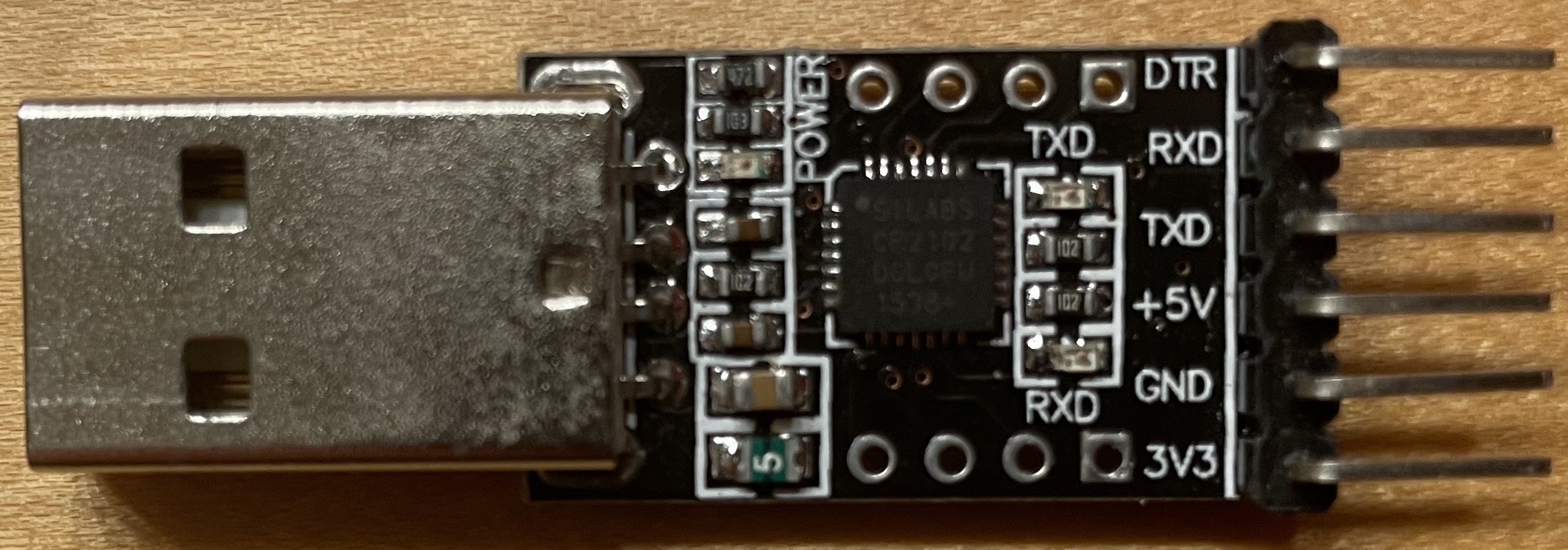
The usb-serial requires a CP2102 driver installed on your laptop. Recent macOS versions ship with a driver pre-installed. If you are using Windows/WSL, you must manually install the driver.
Got CP2102 driver? Is you are running macOS, you already have a CP2102 driver out of the box. Skip over this section; do not manually install the driver.
Expand for instructions to manually install CP2012 driver on Windows/WSL
- Only use these instructions for Windows v10 or v11.
- Installing the CP2102 driver is done from Windows (not inside the WSL terminal). Switch to your Windows web browser and go to the Silicon Labs CP210x Downloads page.
- Select the "Downloads" tab and find "CP210x Windows Drivers v6.7.6". Download this zip file.
- Be sure to choose version 6.7.6! Don't be confused by other drivers with similar names and slightly different version numbers. The version to download is exactly CP210x Windows Drivers v6.7.6.
- Extract all files from the downloaded zip file. Look in the uncompressed folder for the installer exe file that matches the architecture of your laptop. If your laptop is 64-bit, the installer exe is named
CP210xVCPInstaller_x64.exe. If 32-bit, it isCP210xVCPInstaller_x86.exe.
- If you are not sure whether your laptop is 32 or 64-bit, use command
dpkg --print-architecturein your WSL terminal and look for a response ofamd64(64-bit) ori386(32-bit).- Run the installer exe file and follow its instructions.
Find device name
When the usb-serial is plugged into your laptop, it appears as a new entry in the filesystem, with a name of the form /dev/YOUR_DEVICE_NAME for some value of YOUR_DEVICE_NAME. You'll need to know the device name on your system in order to connect to it.
How to get the device name on your system:
-
find-dev.shTry out this little script we hacked up that tries to ferret out the CP2102 device name. It works for some setups but not all.When
find-dev.shfinds the CP2102, it prints the device name. If it doesn't find your usb-serial, double-check that it is connected and powered on. Iffind-dev.shjust isn't working for you, move on to the other method below.$ find-dev.sh /dev/cu.usbserial-0001 $ find-dev.sh Could not find CP2102 serial device. I looked through the serial devices on this computer, and did not find a device associated with a CP2102 USB-serial adapter. Is your USB-serial adapter plugged in? -
Instead use your shell ninja powers to suss out the device name. The idea is to capture a list of the files in directory
/dev/tty*when usb-serial is unplugged and take another capture after connecting it. Applyingdiffto the two listings will show what changed, which gives you the device name for the usb-serial, neat!$ ls /dev/* >unplugged # capture ls output into file named unplugged $ ls /dev/* >plugged # repeat after plugging in usb-serial $ diff plugged unplugged 2a3 > /dev/ttyS3 $ rm plugged unplugged # remove temp files
Note that your device name may be different than the examples above. If you are not able to find the device name, ask us for help!
Connect usb-serial to Pi
-
First, disconnect power to the Pi.
Danger Always have the Pi powered down whenever you are fiddling with the wiring. If you leave it plugged in, power is flowing and all wires are live, which makes for a dicey situation. An accidental crossed wire can a short circuit, which could fry your Pi or make your laptop disable the USB port.
-
Connect transmit, receive, and ground between the usb-serial and the Pi
- Pick out three female-female jumpers: one blue, one green, and one black. People experienced in electronics choose the color of the wire to indicate what type of signal is being carried. This makes it easier to debug connections and visualize the circuit. By convention, black is used for ground, and blue and green are used for transmit and receive, respectively.
- On the usb-serial, identify the pins labeled transmit
TX, receiveRX, and groundGND. Connect the jumpers to the usb-serial as follows:- blue: usb-serial TX
- green: usb-serial RX
- black: usb-serial GND
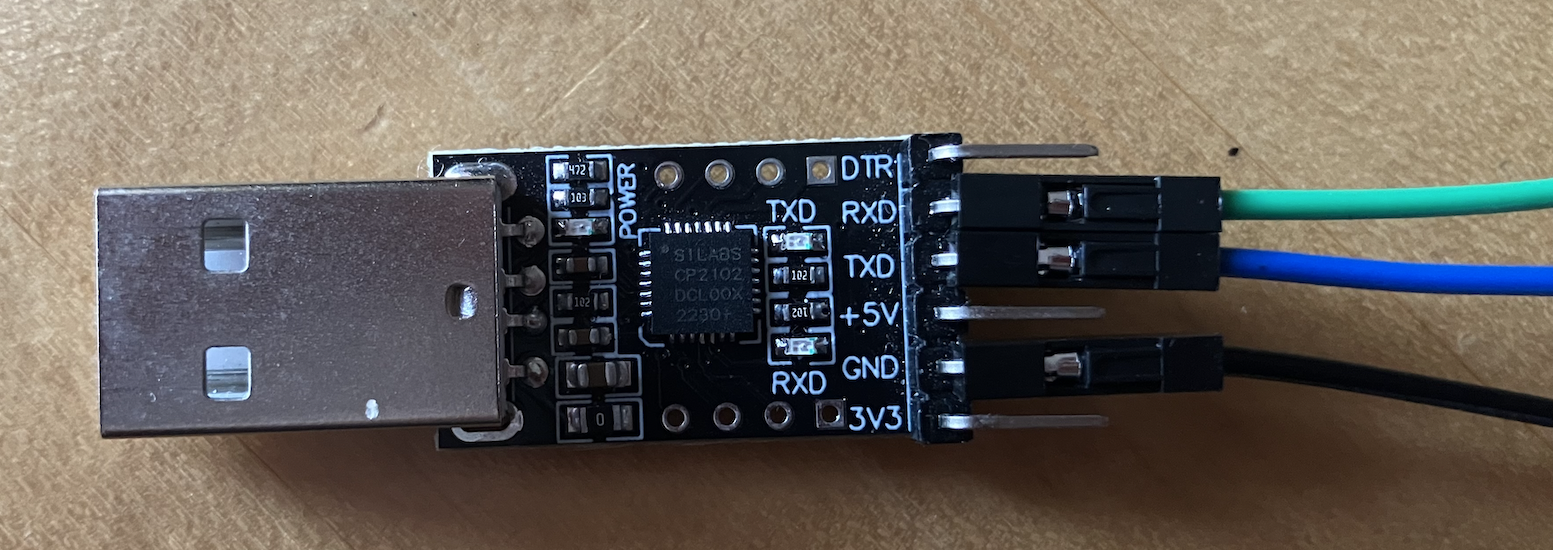
- Use the Mango Pi pinout to locate the header pins for
UART TXandUART RX. Also find an open ground pin. Connect the jumpers from usb-serial to the Mango Pi as follows- blue: usb-serial TX <-> Pi UART RX
- green: usb-serial RX <-> Pi UART TX
- black: usb-serial GND <-> Pi ground
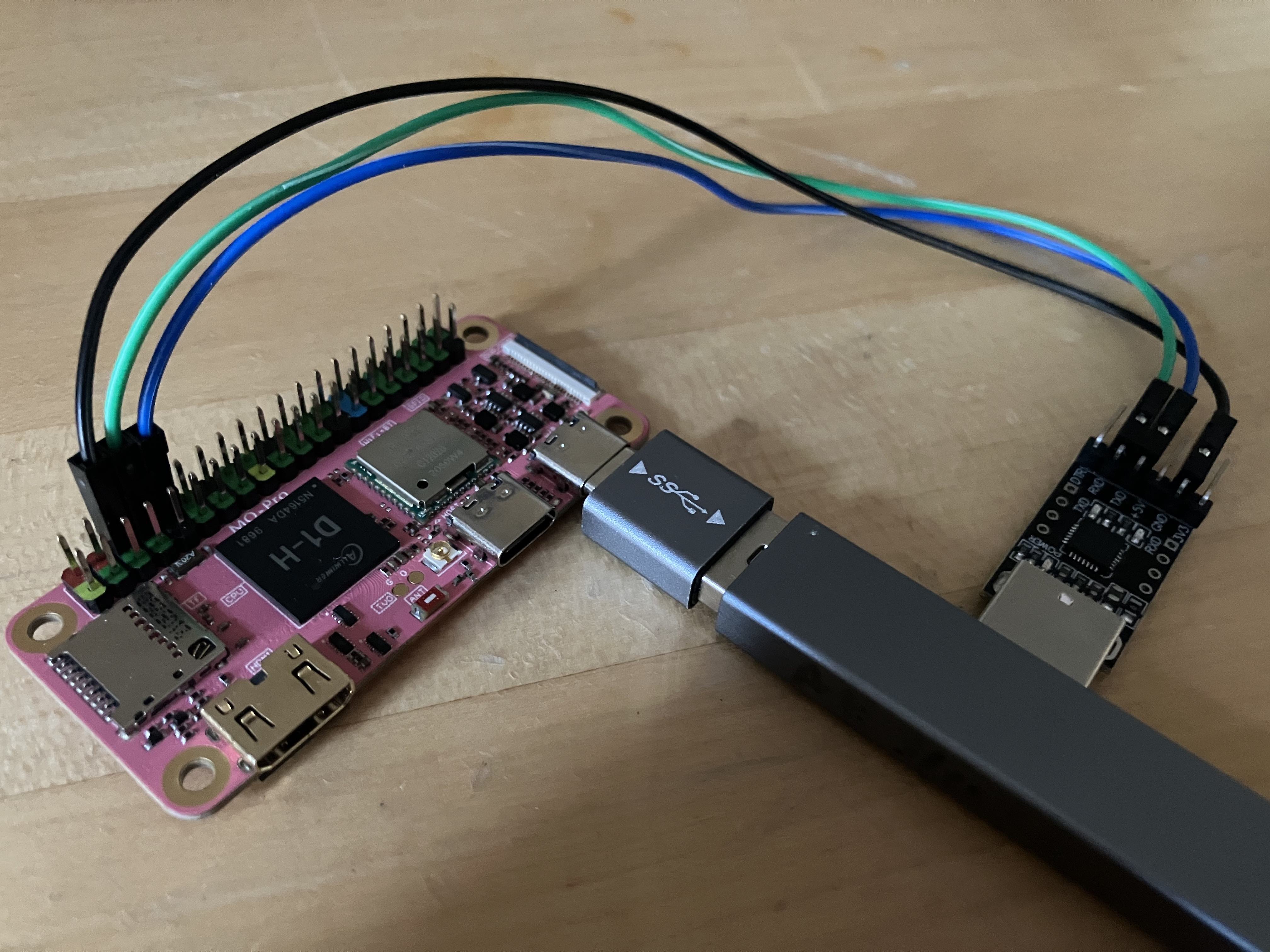 We recommend the arrangement shown above: OTG connected to end of hub and CP2102 connected to side of hub (this configuration leaves open access to the Pi's other USB/HDMI ports).
We recommend the arrangement shown above: OTG connected to end of hub and CP2102 connected to side of hub (this configuration leaves open access to the Pi's other USB/HDMI ports).
Careful with the connections The connections run from one device's TX to the other's RX, i.e. the data transmitted by your laptop is received by your Pi and vice versa. Connecting TX to TX and RX to RX is not correct!
The usb-serial in your parts kit may be a bit different than photos above, so be sure to read the labels rather than follow the photos blindly. Here are a few examples of usb-serial variants we have used (click to enlarge):
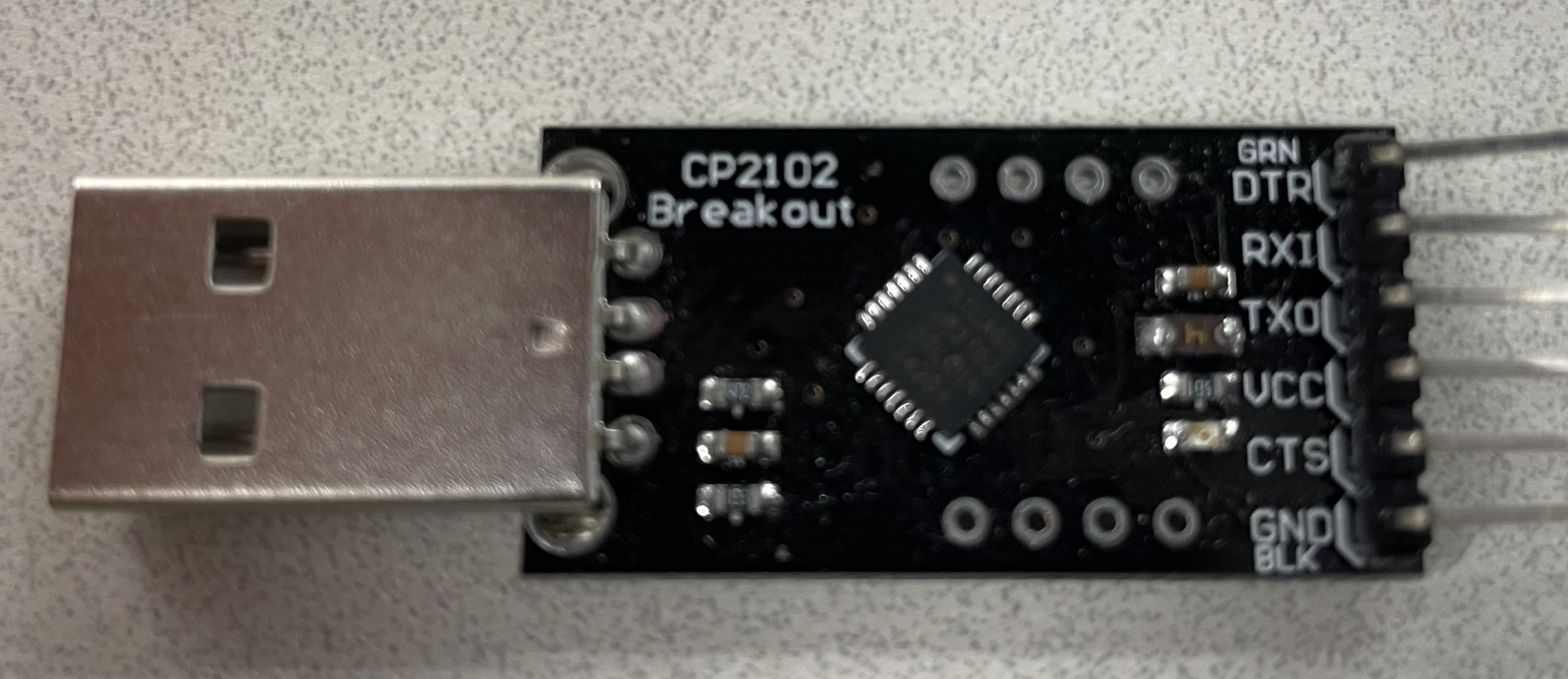
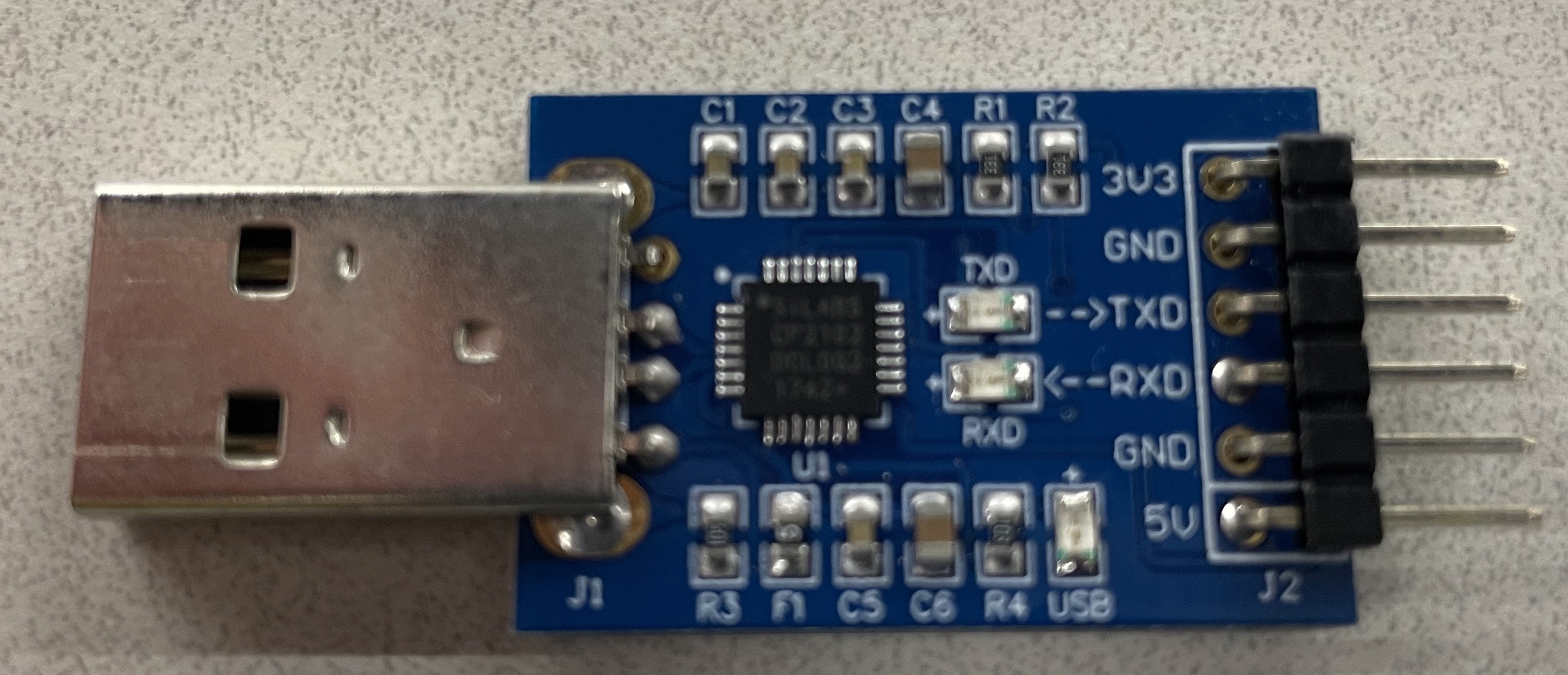
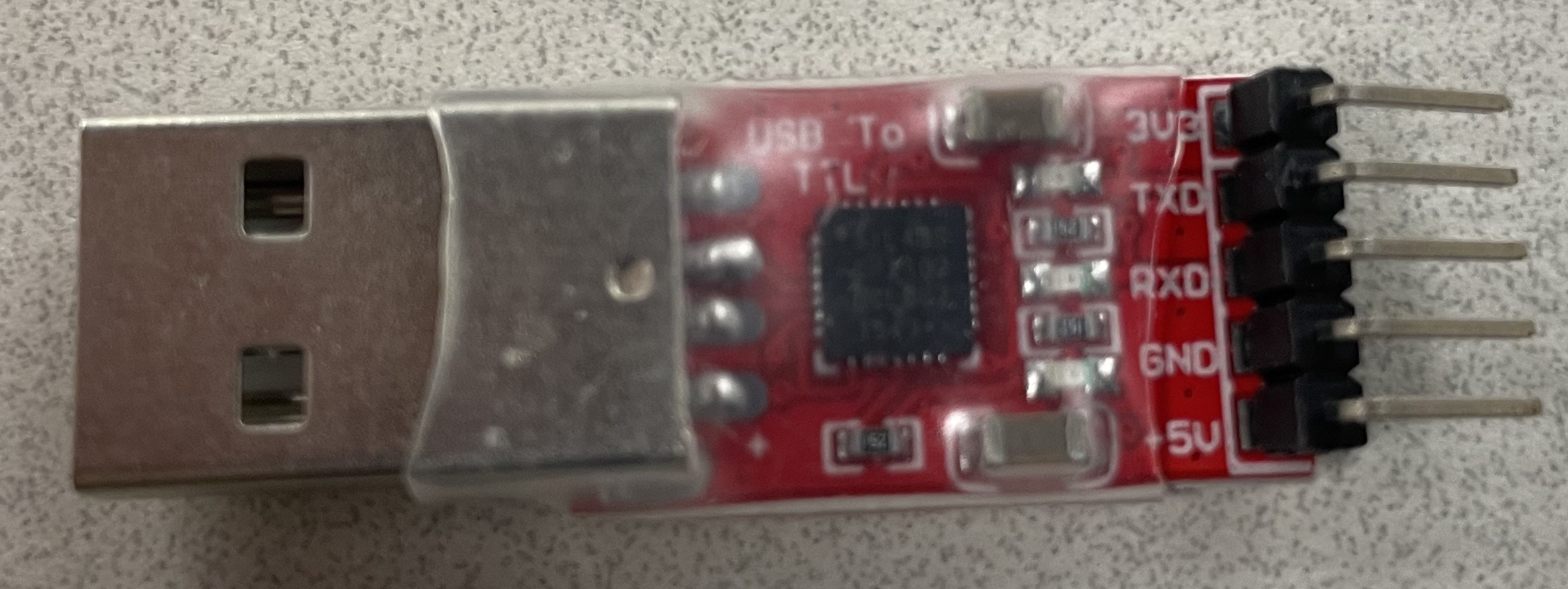
Once you have verified that your connections are correct, plug the usb-serial into your laptop or usb hub and then power up the Pi. You now have a serial connection!
Commnication over tty: tio
There are a number of programs that support communication with a tty device (screen, minicom, putty, etc.) Our favorite of the bunch is tio for its simple interface and nice features, so this is our strong recommendation. (If you already very comfortable with another program, ok to keep using instead).
Got tio? See guide on how to install and configure tio.
A successful uart connection requires that the transmitter and receiver agree on all settings: device name, baud rate, use of start, parity, and stop bits. We are using these settings for communicating between your laptop and Mango Pi:
- peripheral
UART0 - transmit on
GPIO PB8, receive onGPIO PB9 - baud rate 115200 bps
- 1 start bit, 8 data bits, no parity bit, 1 stop bit ("8N1" for short)
Troubleshooting
- Review all three connections to confirm correct (TX->RX, RX->TX, GND->GND).
- Reseat your jumpers if they have wiggled loose.
- If jumper cables appear stressed or worn, replace with fresh ones.
- Confirm that your settings are 115200 8N1.
- If you try to connect and receive the error
Device file is locked by another process, this typically means thattiois already running and connected to the device. Look through your windows to find your existing connnection instead of trying to start another one. - In some situations, the CP2102 device name can change from what it was previously. Re-do the hunt for the device name.
- If tio gets a "permission denied" error when trying to connect to your device, try adding your user id to the group of the
/devfiles (possiblyttyordialout). Ask a staff member for help.